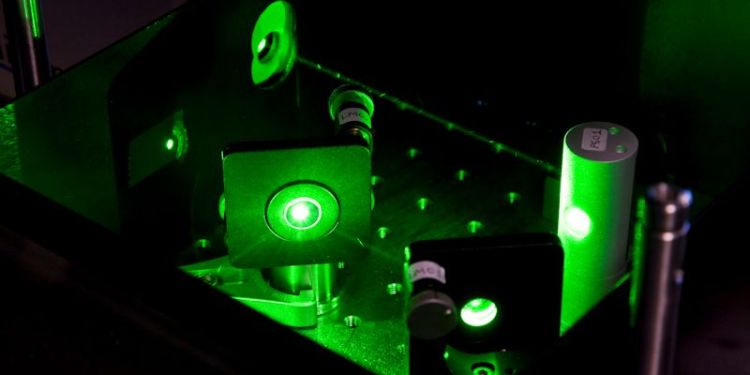Quantum electronics and communications

The group is internationally recognised for research in the simulation, design and optimisation of both III-V and silicon-based semiconductor devices, in particular quantum cascade lasers, quantum well photodetectors, electro-optic modulators and quantum-dot devices, operating across the near-infrared, mid-infrared and THz spectral ranges.
Our work on silicon photonics is focused on the design of silicon and germanium-based optoelectronic devices suitable for integration on silicon substrates. Progress in silicon-based optical transceivers is limited by the lack of an efficient light source. We are investigating the used of strained germanium and germanium/tin alloys, in order to engineer direct-bandgap materials suitable for lasers. Applications of germanium/tin alloys in microelectronics and thermoelectric power generation are also being investigated.
Emerging quantum communications technologies can provide information security against computationally unbounded adversaries. The group is working on solutions for integrating quantum and classical networks, and to provide quantum security at any distance between any two network users.
Research highlights
- Participation in international collaboration which led to the demonstration of the first direct bandgap GeSn based laser.
- Development of the first hybrid model for optical feedback in a THz quantum cascade laser and its use in interferometry for materials analysis and biomedical imaging.
- Pioneering research in multiple-access quantum key distribution networks and memory-assisted solutions to long-distance quantum communications
Collaborations and partnerships
The group co-ordinates a major European network on laser imaging for early cancer detection (COST BM1205) and an international Science for Peace project for use of THz technology for security and trace gas sensing (SfP 984068). Partners include the Universities of Wurzburg, Bari, Toulouse, Porto, Technical University of Barcelona, EPFL, Delft, Queensland, Belgrade, Moscow, and companies such as Nanoplus GmbH and CSEM.
Our recent and ongoing silicon photonics collaborators include Southampton, Glasgow and Warwick universities, Forschungszentrum Juelich, Germany, RWTH Aachen, Germany, and the Paul Scherrer Institute in Switzerland. We also have an ongoing collaboration with Purdue University on gallium nitride nanostructures.
Dr Razavi is a member of the EPSRC National Hub for Quantum Communications Technologies with £24M of funding. The Hub comprises 8 UK universities (Bristol, Cambridge, Heriot-Watt, Leeds, Royal Holloway, Sheffield, Strathclyde, and York), private sector companies including BT, The National Physical Laboratory and Toshiba Research Europe Ltd, and public sector bodies (Bristol City Council and the National Dark Fibre Infrastructure Service), in a unique collaboration to exploit fundamental laws of quantum physics for the development of secure communications services.
The group recently organised an International Workshop on Computational Nanotechnology, which was held in the English Lake District.
Facilities
The group has access to outstanding high performance computing facilities at Leeds including the 736 core ARC1 and 3040 core ARC2 machines, and the 5312 core Northern Universities (N8) consortium Polaris facility, which offers a peak performance of 110Teraflops/sec.
Further information
View all members of our research group and publications.
PhD projects
We have opportunities for prospective postgraduate researchers. Find out more.
Contact us
If you would like to discuss an area of research in more detail, please contact a relevant member of the research team.

